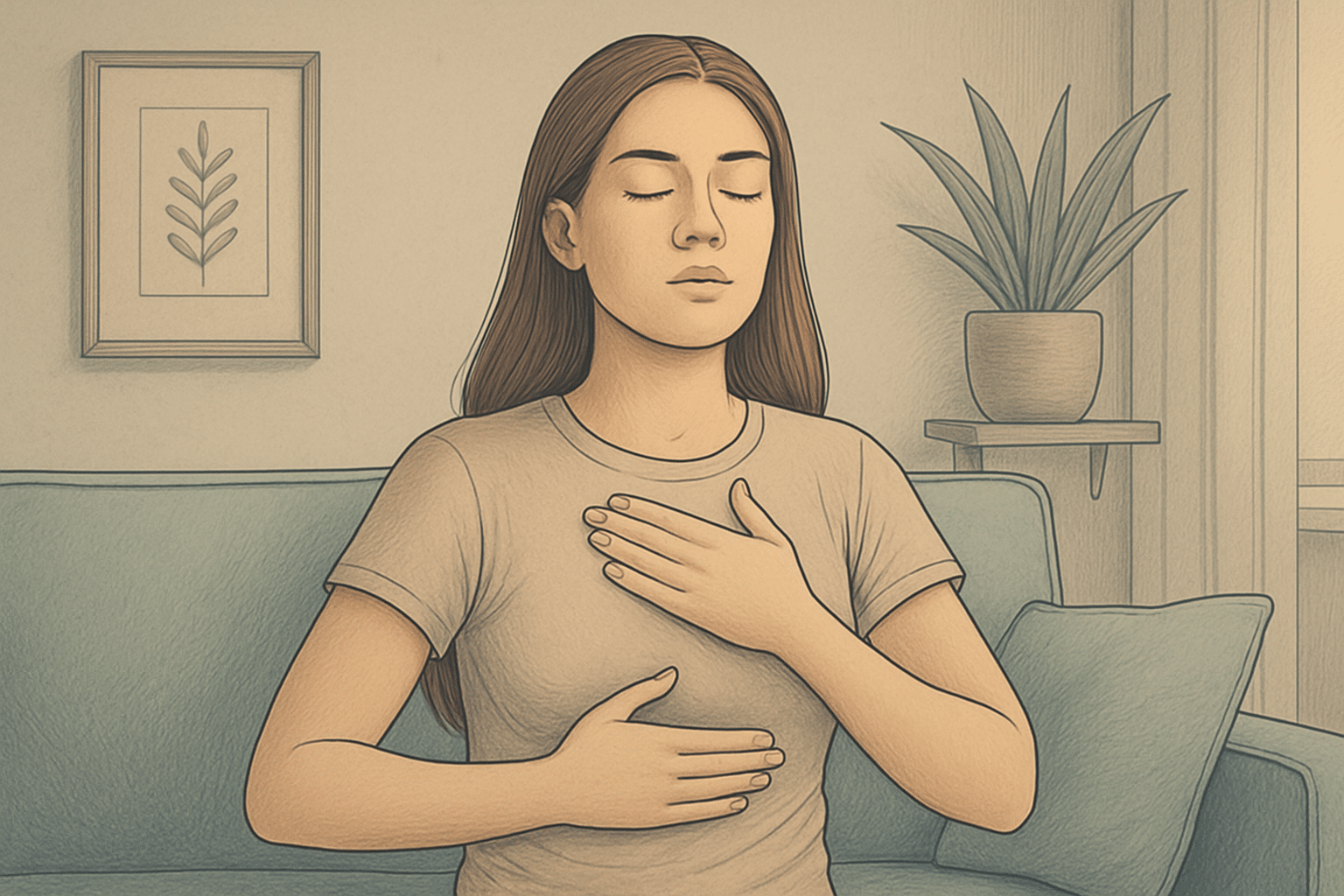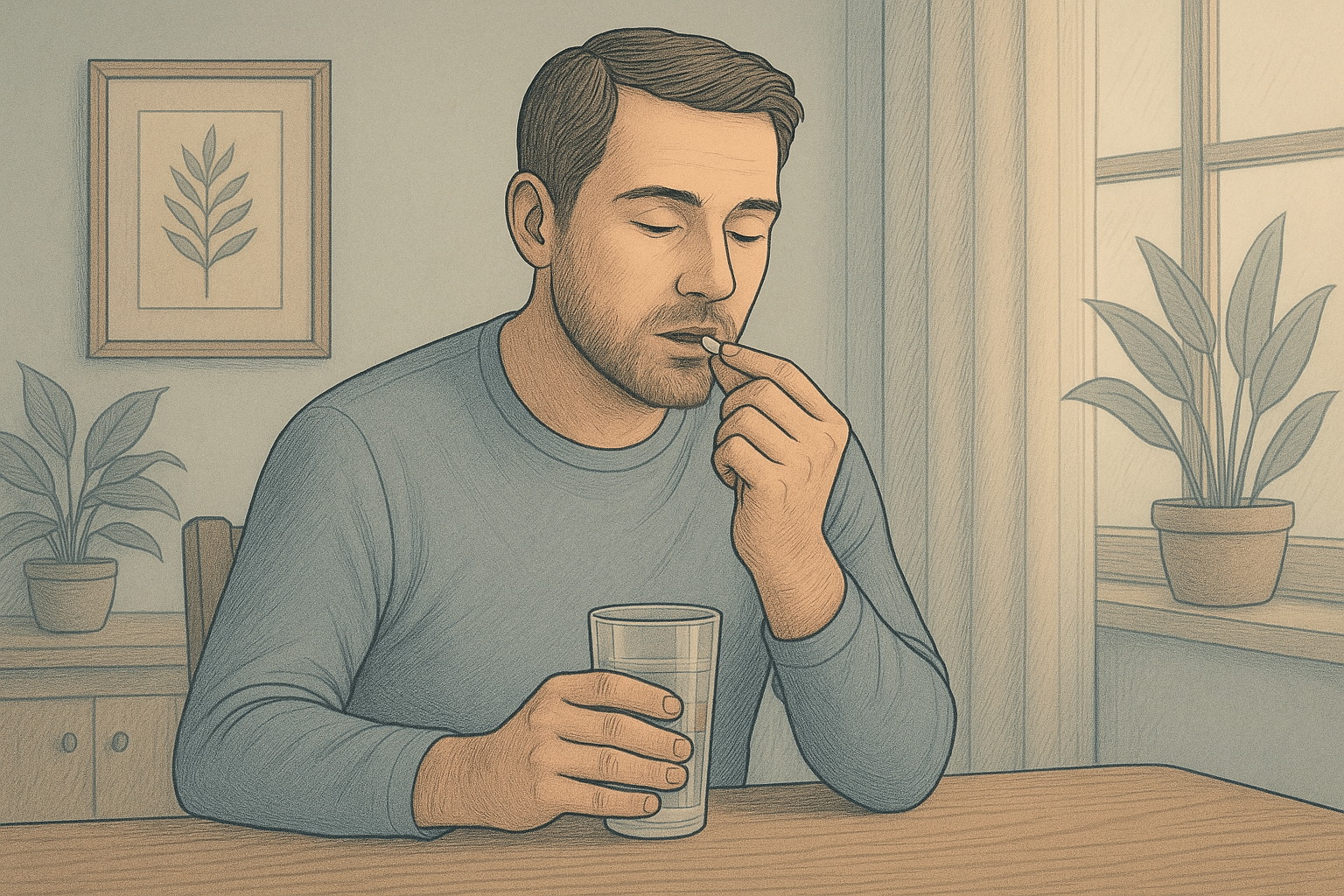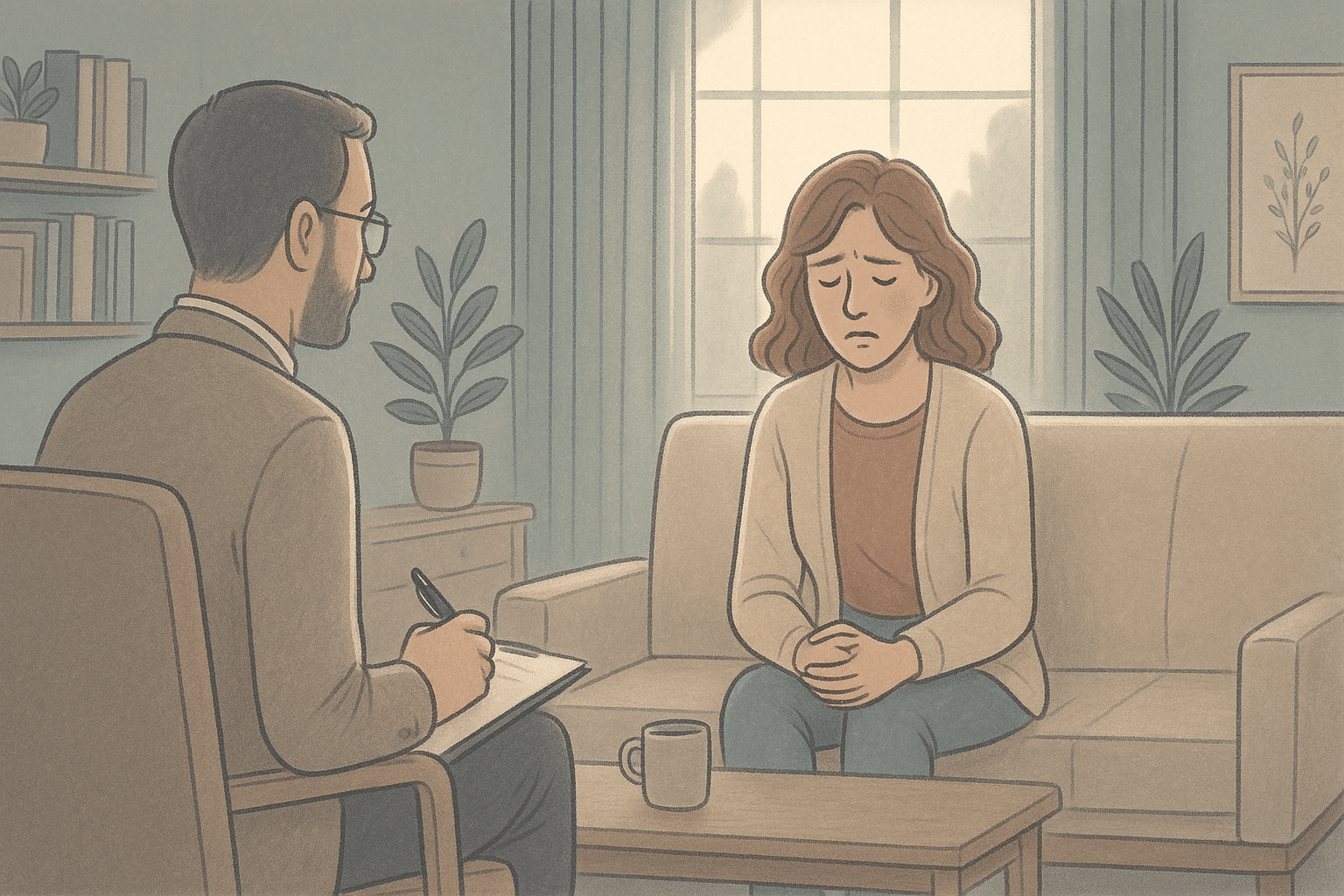Key Takeaways
- PTSD episodes can be managed with proper grounding techniques like the 5-4-3-2-1 method, which engages all your senses to bring you back to the present moment.
- Deep breathing techniques effectively calm your nervous system by activating the parasympathetic response, counteracting the fight-or-flight reaction.
- Physical movement can help discharge trauma energy stored in the body during a PTSD episode, breaking the cycle of overwhelming emotions.
- While self-management techniques are valuable, professional treatment options like EMDR and CPT offer long-term solutions for reducing PTSD episode frequency.
- AMFM provides comprehensive PTSD treatment with evidence-based therapies, specialized trauma recovery programs, and personalized care plans designed to help you regain control over your life and reduce episode severity.
PTSD Episodes: What Happens in Your Brain and Body
During a PTSD episode, your brain essentially gets hijacked by its survival mechanisms. The amygdala, your brain’s alarm system, goes into overdrive while the prefrontal cortex, responsible for rational thinking, takes a backseat.
This neurobiological response creates a perfect storm where your body reacts as if the trauma is happening right now, even when you’re physically safe.
This reaction isn’t a sign of weakness or failure, it’s your nervous system doing exactly what it was designed to do: protect you from perceived threats. Understanding this biological basis helps remove self-blame and creates space for more effective intervention strategies.
Physical Symptoms You’ll Feel During an Episode
- Rapid, shallow breathing or feeling like you can’t breathe
- Racing heartbeat and chest tightness that may mimic a heart attack
- Excessive sweating, chills, or hot flashes
- Muscle tension, trembling, or complete freezing
- Nausea or stomach distress
- Dizziness or lightheadedness
These physical responses are direct results of your body’s fight-or-flight system activating. Your body is flooding with stress hormones like adrenaline and cortisol, preparing you to either confront danger or escape it. Recognizing these symptoms as part of your body’s automatic response rather than a medical emergency can be the first step in regaining control.
Mental and Emotional Signs to Recognize
- Intrusive memories or flashbacks that feel like you’re reliving the trauma
- Overwhelming fear, panic, or sense of doom
- Confusion or difficulty concentrating on the present
- Feeling detached from yourself or your surroundings (dissociation)
- Intense anger, irritability, or emotional outbursts
- Shame, guilt, or feeling permanently damaged
The emotional components of a PTSD episode can be just as overwhelming as the physical symptoms, sometimes more so. Many people describe feeling “crazy” or “out of control” during these episodes, but these reactions are common trauma responses. Your brain is attempting to process unintegrated traumatic memories, and these powerful emotions are part of that process.
| A Mission For Michael: Expert Mental Health Care Founded in 2010, A Mission For Michael (AMFM) offers specialized mental health care across Southern California, Minnesota, and Virginia. Our accredited facilities provide residential and outpatient programs, utilizing evidence-based therapies such as CBT, DBT, and EMDR. Our dedicated team of licensed professionals ensures every client receives the best care possible, supported by accreditations from The Joint Commission and the California Department of Health Care Services. We are committed to safety and personalized treatment plans. Start your recovery journey with AMFM today! |
5 Fast-Acting Techniques to Stop a PTSD Episode
1. The 5-4-3-2-1 Grounding Method

The 5-4-3-2-1 technique is a powerful sensory awareness exercise that can pull you back to the present moment during a PTSD episode.
To do the 5-4-3-2-1 technique, start by acknowledging five things you can see around you, naming them specifically (“I see my blue coffee mug, I see the picture frame on the wall…”). Then identify four things you can touch or feel (like the texture of your clothing or the temperature of the air).
Continue with three things you can hear, two things you can smell, and one thing you can taste. This methodical process engages multiple sensory pathways, redirecting your brain from trauma memories to present reality.
For enhanced effectiveness, speak these observations out loud when possible. The act of verbalizing creates additional neurological pathways that strengthen your connection to the present.
2. Deep Breathing Patterns That Reset Your Nervous System
During a PTSD episode, your breathing typically becomes rapid and shallow, reinforcing your body’s stress response. Intentionally shifting to deep, rhythmic breathing sends signals to your brain that danger has passed.
The 4-7-8 breathing technique is particularly effective: inhale quietly through your nose for 4 seconds, hold your breath for 7 seconds, then exhale completely through your mouth for 8 seconds. Repeat this cycle 3–5 times, focusing entirely on the counting and the sensation of air moving through your body.
Box breathing is another powerful option: inhale for 4 counts, hold for 4 counts, exhale for 4 counts, hold for 4 counts, and repeat. These structured breathing patterns activate your parasympathetic nervous system, your body’s “rest and digest” mode.
3. Physical Movements to Interrupt the Trauma Response

Trauma gets stored in the body, and physical movement can help discharge this trapped energy during an episode.
Simple techniques like pushing your hands against a wall, stomping your feet firmly on the ground, or tensing and releasing muscle groups can help interrupt the trauma response.
These movements provide proprioceptive input, sensations that help your brain locate your body in space, which can be remarkably grounding when you’re caught in flashbacks or dissociation.
For more subtle options in public settings, try firmly pressing your feet into the floor while squeezing a stress ball or rubbing a textured object in your pocket.
4. Self-Talk Phrases That Actually Work
The internal narrative during a PTSD episode often intensifies symptoms, with thoughts like “I’m not safe” or “I can’t handle this” creating a feedback loop of distress.
Preparing personalized self-talk statements in advance gives you ready access to counterbalancing thoughts when you need them most. Effective phrases acknowledge current reality while creating distance from trauma responses: “This is a memory, not current danger,” “My body is reacting to past trauma, but I am safe now,” or “This feeling is temporary and will pass.”
The most effective self-talk statements are brief, specific to your experiences, and practiced regularly. Consider recording these phrases in your own voice to play back during episodes.
5. Safe Space Visualization
Creating a detailed mental safe space can provide refuge during overwhelming PTSD episodes. Work with a therapist to develop a vivid mental image of a place real or imagined, where you feel completely secure and calm.
Include specific details across all senses: what you see, hear, smell, feel, and even taste in this space. During an episode, guide yourself there step by step, describing each element in detail to fully engage your imagination and redirect your focus from traumatic content.
For many people, combining visualization with physical anchoring enhances effectiveness. This might mean holding a small object that represents safety, wearing a specific scent that you’ve associated with your safe space, or listening to sounds that match your visualization. With practice, you can learn to access this mental refuge quickly when PTSD symptoms begin to escalate.
When Self-Help Isn’t Enough: Professional Treatment Options
Evidence-Based Therapies for PTSD
While self-management techniques are essential for managing episodes, professional treatment approaches offer the possibility of reducing episode frequency and intensity over time.
Trauma-focused Cognitive Behavioral Therapy (TF-CBT) helps restructure trauma-related thoughts and beliefs while developing new coping skills. Eye Movement Desensitization and Reprocessing (EMDR) uses bilateral stimulation to help the brain process traumatic memories differently.
Cognitive Processing Therapy (CPT) specifically targets the way you make meaning of your trauma and helps shift unhelpful patterns of thinking that maintain PTSD symptoms.
Medication Options and What to Expect

Medication can be an important component of PTSD treatment, often working best in combination with therapy.
When discussing medication options with your healthcare provider, be honest about your concerns and any past experiences with medications. Some people with PTSD worry about medications that might cause sedation or feeling out of control. A good provider will work with you to find options that address your symptoms while respecting these boundaries.
Keep in mind that finding the right medication or combination often requires patience and adjustment. Track your symptoms, side effects, and improvements to help your provider make informed decisions about your treatment plan. Medication isn’t erasing your experiences; it’s creating enough stability to engage effectively in your healing process.
AMFM: Your Partner in PTSD Recovery
At A Mission For Micheal, we understand that every person’s trauma experience is unique, which is why our specialized treatment centers across California, Washington, Minnesota, and Virginia offer personalized care plans designed around your specific needs.
Our trauma-informed approach combines proven therapies like EMDR, cognitive processing therapy, and trauma-focused CBT with comprehensive treatments to address both symptoms and underlying causes.

AMFM home like facilities offer the structure and stability needed to aid healing and recovery in your treatment journey.
Our compassionate clinical teams provide comprehensive PTSD treatment options, from intensive outpatient programs to residential care, ensuring you receive the appropriate level of support for your recovery journey.
With free confidential assessments, insurance verification assistance, and evidence-based treatment protocols, AMFM is committed to helping you regain control over your life and reduce the frequency and intensity of PTSD episodes.
Frequently Asked Questions (FAQ)
How quickly can grounding techniques stop a PTSD episode?
Grounding techniques like the 5-4-3-2-1 method can begin providing relief within minutes of implementation. Most PTSD episodes last 20 minutes to several hours, but using intervention strategies at the first sign of symptoms often significantly shortens duration and reduces intensity.
Can I prevent PTSD episodes from happening entirely?
While complete prevention isn’t typically realistic, especially early in recovery, many people achieve significant reduction in both frequency and intensity over time through comprehensive treatment. The goal is progress rather than perfection—each successfully managed episode represents important progress in your healing journey.
What should I include in my PTSD emergency kit?
Your comfort kit should contain sensory grounding objects (stress ball, scented oils), written reminders of techniques, photos of safe people or places, calming music playlists, emergency contact information, and a crisis card with step-by-step instructions for both you and others who might help.
When do I need professional help for PTSD episodes?
Seek professional treatment if episodes regularly last more than a few hours, occur multiple times per week, significantly interfere with daily functioning, or if self-management techniques aren’t providing adequate relief. Early intervention often leads to better outcomes and faster recovery.
How does AMFM’s approach to PTSD treatment differ from other facilities?
AMFM offers specialized trauma recovery programs across multiple states with evidence-based approaches like EMDR and trauma-focused CBT. Our facilities provide comprehensive care combining traditional and holistic therapies, personalized treatment plans, and various levels of care from outpatient to residential programs for your specific needs.












